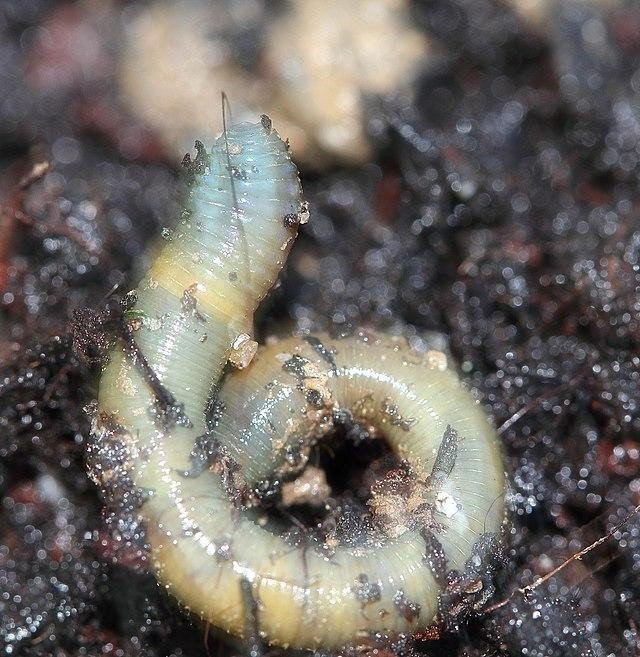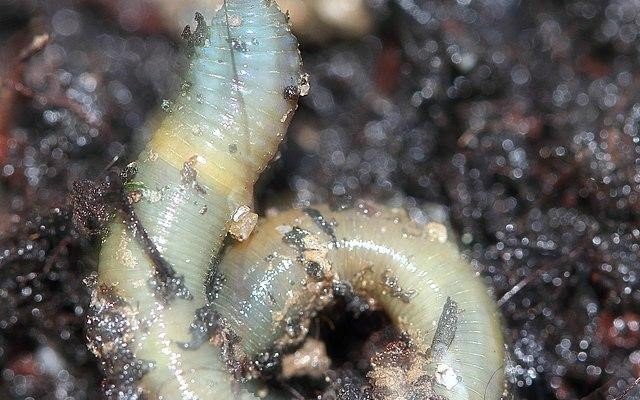
Imagine a delicate ecosystem, where the tiniest shifts can have a big impact. In this case, we’re talking about both predators that love to snack on these worms and the environmental factors that threaten their very existence. As a content creator passionate about helping hobbyists understand these dynamics, I’m excited to explore the various challenges Grindal worms face.
Let’s dive into how we can protect these little protein-packed wonders from their natural enemies and a changing environment.
What Are Grindal Worms?
Grindal worms, or *Enchytraeus buchholzi*, are small freshwater worms that typically live in moist environments. They’re often only a few centimeters long, making them a great food source for smaller fish and insects. Since they thrive in a range of conditions, you can easily set up a culture at home. Just think of them as little wigglers that can bring a burst of life to your aquarium or terrarium.
These worms are particularly special because they reproduce quickly, which means they can be harvested often. One common method to grow them at home is using a substrate of soil or peat moss in a container. Keeping them warm and moist helps them flourish, but that’s only half the battle. Protecting them from predators and environmental threats is crucial if you want a steady supply.
You might be wondering what or who threatens these little guys. Let’s break it down!
Natural Predators of Grindal Worms
Grindal worms may be small, but they are still a favorite snack for various predators. In nature, many creatures might find a delicious meal in these worms. Here are a few common culprits:
- Fish: Certain smaller fish, especially those that hunt near the substrate, are known to gobble up Grindal worms. Species like guppies and bettas may see them as an easy meal.
- Invertebrates: Tiny shrimp and certain types of aquatic insects love to feast on Grindal worms too. They’re excellent hunters in the soil or water, seeking out these treats.
- Birds and amphibians: If a Grindal worm happens to wiggle its way onto a surface, birds or frogs can easily snag them for a snack.
Keeping these predators in mind is essential for anyone looking to maintain a healthy Grindal worm population. Setting up an environment that minimizes exposure to these threats can significantly increase your worms’ survival rates.
Environmental Factors Impacting Grindal Worms
Beyond predators, various environmental factors can threaten Grindal worms. These affect their breeding capacity and overall health. Here are some key issues to consider:
- Temperature: Grindal worms thrive in temperatures between 60°F to 75°F. If it gets too cold or too hot, their populations can drop dramatically. A sudden shift in temperature can be detrimental.
- Humidity Levels: Since these worms live in moist environments, cutting back on humidity can be a death sentence. Too dry, and they can become desiccated; too wet, and they can drown.
- pH Levels: They prefer a slightly acidic to neutral pH (around 6 to 7). If you’re using soil or any substrate, monitoring the pH is vital to make sure their home doesn’t become inhospitable.
Here’s the thing: maintaining the right environment is like creating a cozy home for your worms. If the temperature swings too high or low, or if the humidity isn’t right, you could lose your entire culture without even knowing why.
Preventing Predator Intrusion
To help Grindal worms thrive, you’ll need to implement some protection against their predators. This is akin to creating a safe neighborhood for them. Here are a few strategies you can consider:
- Containment: Use fine mesh netting or lids with tiny holes for ventilation. This keeps out larger fish or insects while allowing air circulation.
- Separate Cultures: Keeping your Grindal worms in a designated area away from predatory species can help minimize the risk of them becoming a meal.
- Regular Harvesting: The more often you harvest the worms, the less time they have to be exposed to predators. Think of it as keeping a main course ready while the side dishes stay safe!
Maintaining vigilance is key. Regular checks on your worm population can help you spot any signs of trouble before it gets serious.
Mitigating Environmental Stressors
As you work on protecting your Grindal worm population from predators, don’t forget about managing the environmental factors that can stress them out. Here are some proactive measures:
- Monitor Temperature: Invest in a thermometer to ensure that the environment stays within the ideal range. If temperatures fluctuate too much, consider moving them indoors or using a heater.
- Control Humidity: Use a spray bottle to maintain moisture levels. You can also cover the container with a damp cloth to retain humidity without saturating the worms.
- Substrate Maintenance: Regularly check the pH levels of your substrate. It might be wise to replace or refresh the soil or peat to keep it hospitable.
When you manage these factors effectively, you not only protect your current population of Grindal worms but also help them reproduce more efficiently.
Benefits of Maintaining a Healthy Grindal Worm Culture
Why go through the effort to protect and maintain a Grindal worm culture? Well, the benefits can greatly outweigh the work put in. Here’s what you gain:
- Nutrition for Pets: Grindal worms are packed with proteins, making them an ideal food source for fish and other pets. Keeping a constant supply of them can lead to healthier, happier aquatic life.
- Sustainable Food Source: Unlike store-bought options, breeding Grindal worms at home offers a sustainable solution to feeding your pets. Plus, it’s often much cheaper!
- Educational Opportunities: Raising Grindal worms can be a fun and rewarding project. It allows hobbyists to learn about the life cycles of these creatures and how ecosystems interact.
As you can see, maintaining a healthy culture isn’t just beneficial for your pets; it also adds layers of knowledge and experience to your hobby.
Grindal worms might be small, but they play a big role in the ecosystem of your tank or terrarium. Understanding the threats they face, from natural predators to environmental factors, is crucial for maintaining a thriving culture. By taking steps to protect these worms, you not only ensure a steady food supply for your pets but also enhance your overall experience as a hobbyist.
So, whether you’re just starting out or looking to deepen your knowledge, keep these factors in mind. Happy worm-raising!

